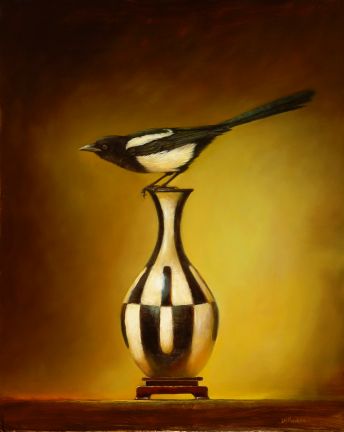Did you know the Chinese concept of yin-yang can be used to improve composition in art and design?
Our goal as artists is to lead the viewer’s eye into and around the painting while keeping interest in the focal point. Using the design aspects of yin-yang can help.
Natural dualities such as male and female, light and dark, high and low, hot and cold, water and fire, and so on, are thought of as physical manifestations of the yin-yang concept.
Wikipedia explains: Yin and yang are actually complementary, not opposing, forces, interacting to form a whole greater than either separate part; in effect, a dynamic system. Everything has both yin and yang aspects, (for instance shadow cannot exist without light).
Composition is the selective arrangement of elements in a painting.
When designing a new composition, I like to use the concept of yin-yang in art much like using feng shui design in a living room. Yin yang theory forms the foundation of feng shui.
For instance: The placement of the sofa, chairs, table and art on the walls create the composition of the room. You decide your room’s focal point, where your guests sit, and so on. Hopefully, with good placement the room feels positive energy, or chi.
The same can be done when composing a painting.
Most artists make preparatory sketches using pencil or charcoal to record the light and dark (yin-yang) masses and positive and negative (yin-yang) shapes until a pleasing and well balanced composition is chosen. These opposites attract in art.
So most of us have been using yin-yang and didn’t even know it!
In Chinese yin-yang philosophy, the visual path is the energy of chi in the painting. These opposing forces govern the balance and movement of the composition. These forces are down/up, left/right, small/large, and back/front. In designing a painting, these forces can be used to move the eye through the painting. A strong composition always has movement or rhythm or else it has no chi or energy. This rhythm can vary greatly from painting to painting.
“On Edge – Magpie” is an example of how I used a simple design that is dynamic and energetic (yang). The pose of the bird and the repeating black and white paterns gives energy to this painiting. The bird is perched and ready for action and looks as though is about to fly out of the painting. The unification of pattern and rhythm within the painting creates an energetic composition.

Try some of these compositional yin-yang concepts and feng shui your next painting.
Check out these related articles:
A Unique Approach Using Color Harmony to Improve Your Paintings
Use the Hidden Meaning of Color in Your Art








